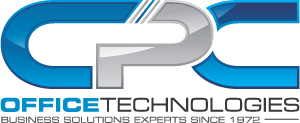
Digital document management solutions have become increasingly popular in recent years as businesses try to keep up with the ever-growing amount of information that needs to be tracked and stored. In this blog post, we will discuss what document management is, what it can do for your business, and where to start when implementing a digital document management system.
What is Document Management?
Document management refers to the process of storing, organizing, and tracking documents in a way that makes them easy to access, edit, and share. In the past, this was often done using physical documents, but modern technology has made it possible to manage documents digitally.
Digital document management systems use software to store documents in a central location, making them accessible to authorized users from anywhere with an internet connection. These systems often include features such as version control, security, and search functionality, making it easier to keep track of changes and find the information you need.
What Can Document Management Do for Your Business?
Implementing a digital document management system in your business can provide many benefits, including:
-
Increased Efficiency – With a digital document management system, you can quickly and easily find the documents you need without wasting time searching through file cabinets or folders.
-
Improved Collaboration – Digital document management systems allow multiple users to access and edit documents simultaneously, improving collaboration and reducing the need for email attachments.
-
Enhanced Security – Digital document management systems can provide better security for your documents than physical ones. Features such as password protection and access control help ensure that only authorized users can view and edit your documents.
-
Better Disaster Recovery – With a digital document management system, your documents are backed up regularly, reducing the risk of losing important information in the event of a disaster.
-
Cost Savings – Digital document management systems can help reduce printing, storage, and mailing costs associated with paper-based systems.
Where to Start with Document Management?
Implementing a digital document management system can seem like a daunting task, but it doesn't have to be. Here are some steps to help you get started:
-
Assess Your Needs – Take an inventory of your current document storage methods and identify any pain points or inefficiencies. This will help you determine what features you need in a document management system.
-
Choose a System – Once you've identified your needs, research document management systems that meet those requirements. Consider factors such as cost, ease of use, and compatibility with your existing software.
-
Plan Your Implementation – Before implementing your new system, create a plan that outlines the steps you'll take to migrate your existing documents and train your employees on the new system.
-
Train Your Employees – A digital document management system is only effective if your employees know how to use it. Provide thorough training and ongoing support to ensure that everyone understands how to access and use the system.
Conclusion
Implementing a digital document management system can provide many benefits to your business, including increased efficiency, improved collaboration, enhanced security, and better disaster recovery. By assessing your needs, choosing the right system, planning your implementation, and training your employees, you can successfully transition to a digital document management solution that works for you. It's a worthwhile investment that will pay off in the long run by improving your overall productivity and bottom line.
